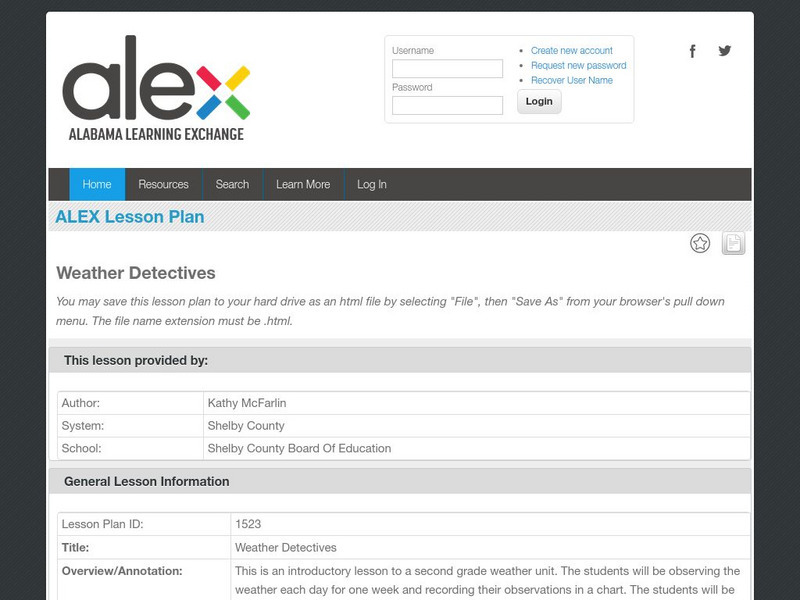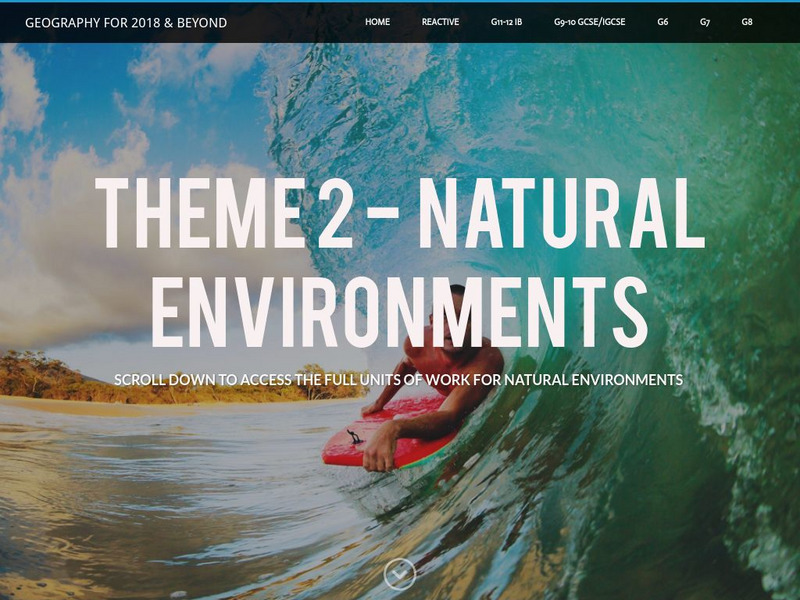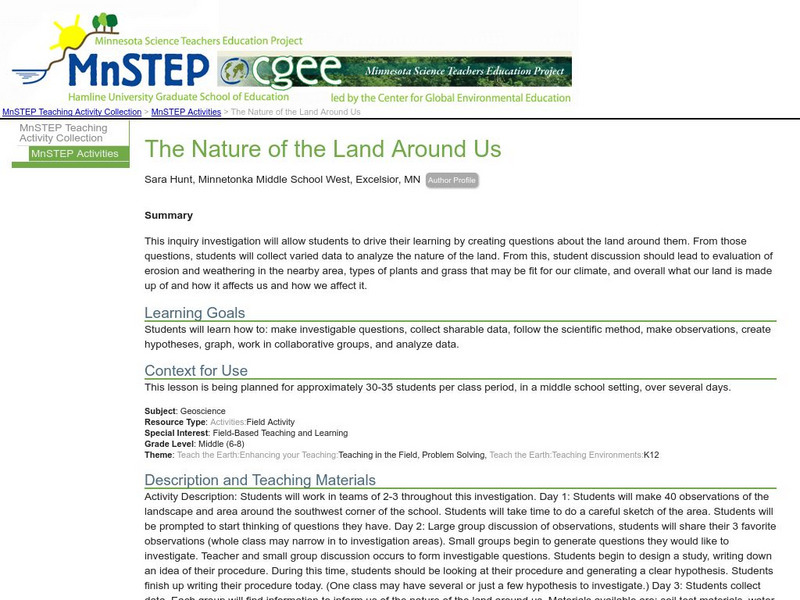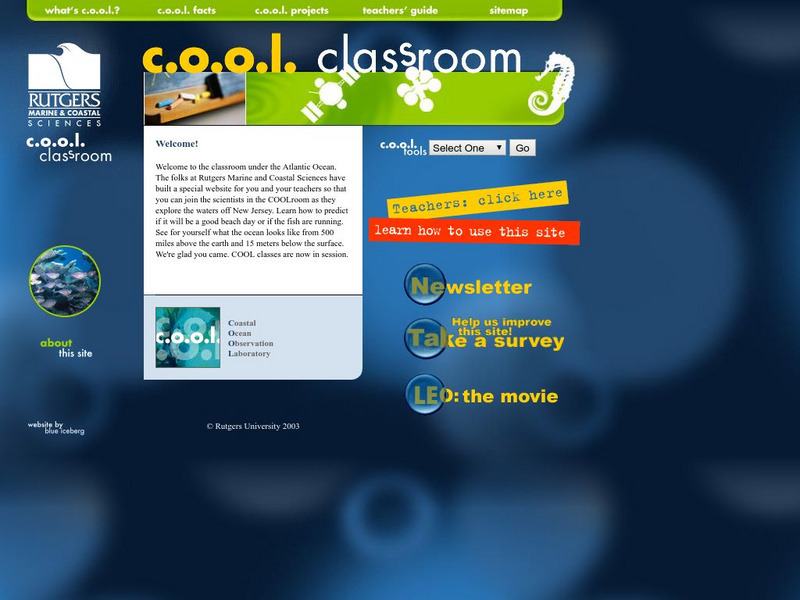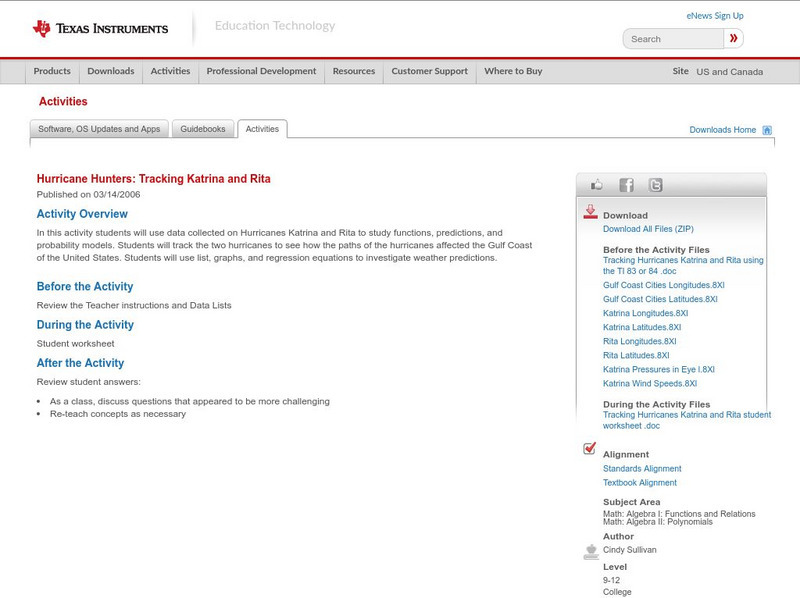University Corporation for Atmospheric Research
Ucar: Project Sky Math
Teachers will be interested to explore the SkyMath module, and the 16 classroom activities at this site. In this program, students will collect and record real-time weather data to analyze. Data analysis, graphing, number relationship,...
NOAA
Noaa: Weather and Atmosphere
The collections in this thematic area provide educational resources that introduce concepts of weather and atmosphere. It provides activities and data for exploring weather and atmospheric sciences, and link to emerging research on these...
Utah Education Network
Uen: Weather Walks
In this multi-day, learners will learn weather through multisensory approaches. Students will make daily predictions. After each daily prediction, they will collect measurement and observational data by taking walks in different types of...
Better Lesson
Better Lesson: Exploring Weather One, Two, Three, Forecast!
Students will use weather data they collect to predict future weather. Included in this instructional activity are a weather forecasting recording sheet and an example of a student's completed work.
Society for Science and the Public
Science News for Students: Cool Jobs: Wet and Wild Weather
How's the weather? Forecasts rely on scientists and engineers who collect and interpret data gathered on the ground, in the sky and way up in space.
Center for Innovation in Engineering and Science Education, Stevens Institute of Technology
Ciese: Collaborative Projects
Using a variety of science topics, these projects link your class with classes around the world in data collection and analysis. There are projects recommended for all grade levels. Begin dates and end dates are listed to help in...
Other
Classzone: Weather Forecasters Use Advanced Technologies [Pdf]
An excerpt from an earth science textbook. The chapter shown here covers concepts about how weather data is collected, displayed and how meteorologists forecast fronts and storms.
NASA
Nasa Earth Observatory: Should We Talk About the Weather?
Discover how scientists use the BOREAS to gather data such as heat, carbon dioxide, water vapor, and more to see what role these levels have on climate changes.
Alabama Learning Exchange
Alex: Weather Detectives
This is an introductory lesson to a second grade weather unit. The students will be observing the weather each day for one week and recording their observations in a chart. The students will be integrating information from the Internet...
Alabama Learning Exchange
Alex: Charting the Weather
During this activity, students will gather data from temperature and water gauges set up on the playground to learn about weather patterns. Then students will build a spreadsheet with data related to temperature, wind direction and...
Geographypods
Geographypods: Theme 2: Natural Environments
A rich collection of highly engaging learning modules on topics related to the natural environment. Covers four main areas - plate tectonics, forms and processes, weather and climate, and rainforest and desert. Within each of these,...
Science Education Resource Center at Carleton College
Serc: Danger in the Air
In this learning module, students are involved in an observational study of air pollutants in the atmosphere. The students collect and examine air quality and weather data, looking for correlations between weather and air quality.
American Geosciences Institute
American Geosciences Institute: Earth Science Week: The Earth Trek Gravestone Project
The Gravestone Project, part of the global citizen science program called EarthTrek, seeks volunteers to visit cemeteries around the world and collect scientific data on how marble gravestones are weathering.
Better Lesson
Better Lesson: Graphing January's Weather
First graders graph the weather in Vermont for the month of January.
Texas Instruments
Texas Instruments: Sunrise, Sunset: Weather Match
Students determine the relationship between temperature and light intensity. They use a Temperature Sensor and a Light Intensity Sensor to collect temperature and light intensity data for a period of 24 hours. They understand the effect...
The Franklin Institute
Franklin Institute Online: Make Your Own Rain Gauge
Make a simple rain gauge to measure the precipitation.
NASA
Nasa: Trends of Snow Cover and Temperature in Alaska
This lesson plan allows students to use NASA satellite data observations with surface measurements of snow in Alaska. Students will be able to make scientific predictions, find data correlations, and learn about data collection methods.
Science Education Resource Center at Carleton College
Serc: The Nature of the Land Around Us
An inquiry investigation which allows learners to drive their learning by creating questions about the land around them. They collect varied data to analyze the nature of the land, and as a result, investigate erosion and weathering in...
Other
Rutgers Marine & Coastal Sciences: Cool Classroom
Students and teachers can explore the work of marine scientists and observe the ocean from their computers. Learn about Rutgers Coastal Ocean Observation Laboratory, discover why oceanography is important, and see what life is like in...
Science Education Resource Center at Carleton College
Serc: Do You Really Want to Visit the Arctic?
This jigsaw activity is designed for students to become familiar with several datasets of Arctic weather data, collected in Eureka on Ellesmere Island. Students join a role-playing activity to read and interpret graphs while considering...
NOAA
Noaa: Cpc: Weekly Enso Update
Weekly updates on data collected and analyzed by the Climate Prediction Center. Includes sea surface temperature, subsurface tropical Pacific analyses and much more. Extensive site: check it out!
Science Education Resource Center at Carleton College
Serc: Measuring and Comparing Temperatures
Using thermometers, students will compare differences in the temperature of various materials and locations. They will record and chart the data that was collected and present the graphs to their classmates.
Microsoft
Microsoft Education Lesson Plan: Making Money From Lemons
Simulation where learners apply mathematics and economics concepts in the lemonade business. Learners set up a virtual lemonade stand and must determine production costs, product variables, and profits. Students record data collected on...
Texas Instruments
Texas Instruments: Hurricane Hunters: Tracking Katrina and Rita
In this activity students can use data collected on Hurricanes Katrina and Rita to study functions, predictions, and probability models. Students will track the two hurricanes to see how the paths of the hurricanes affected the Gulf...






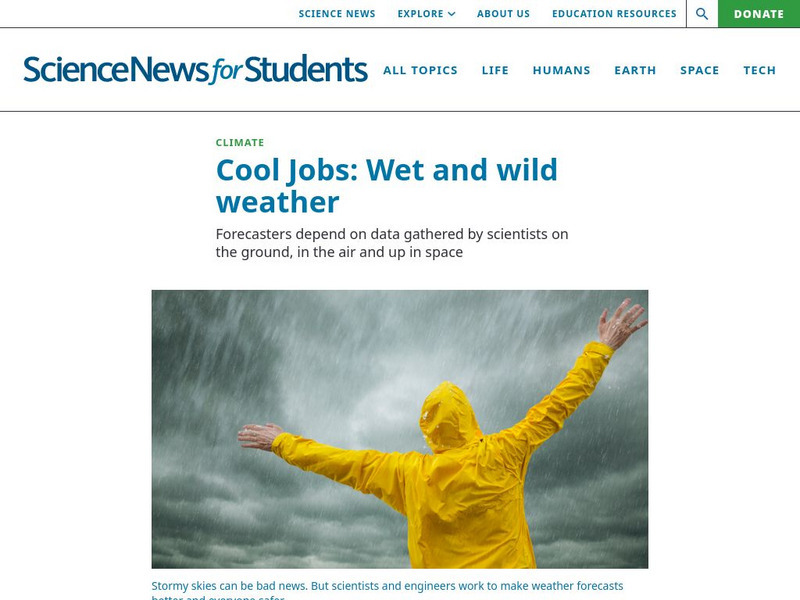
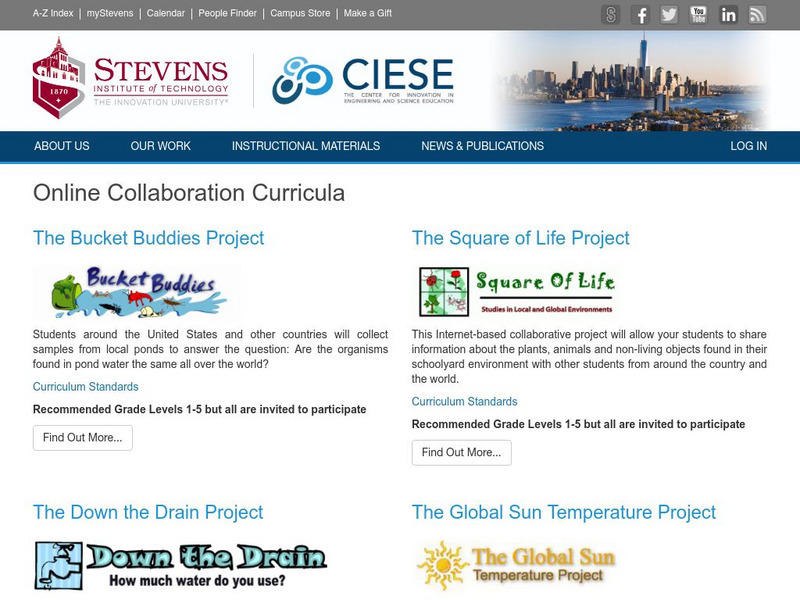
![Classzone: Weather Forecasters Use Advanced Technologies [Pdf] eBook Classzone: Weather Forecasters Use Advanced Technologies [Pdf] eBook](https://d15y2dacu3jp90.cloudfront.net/images/attachment_defaults/resource/large/FPO-knovation.png)

